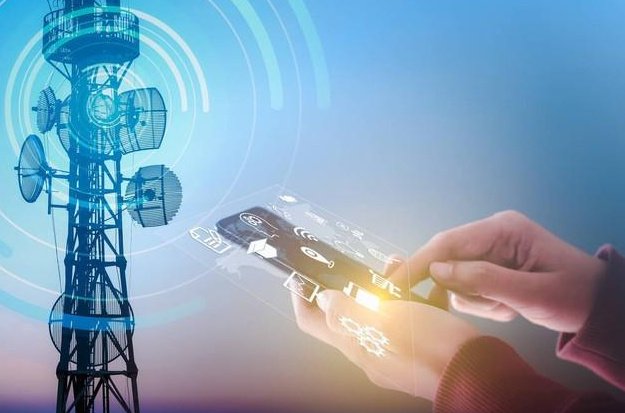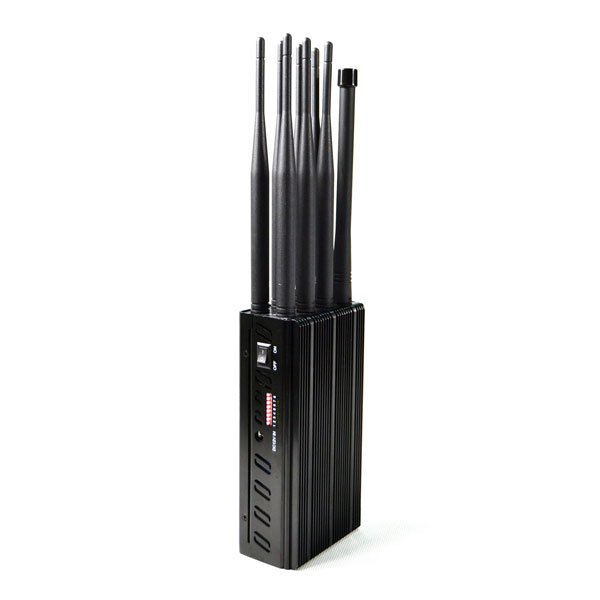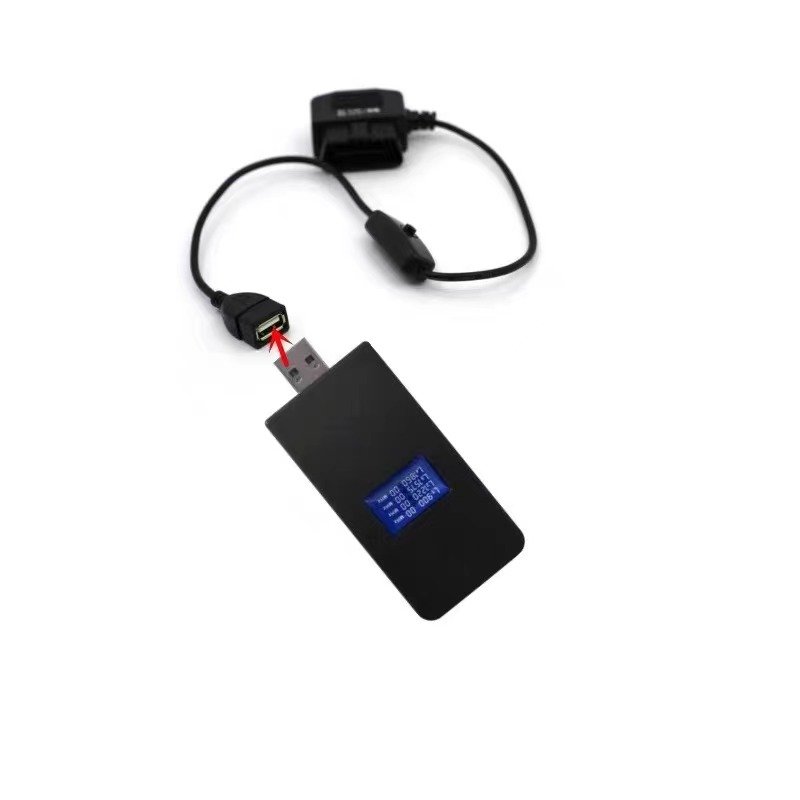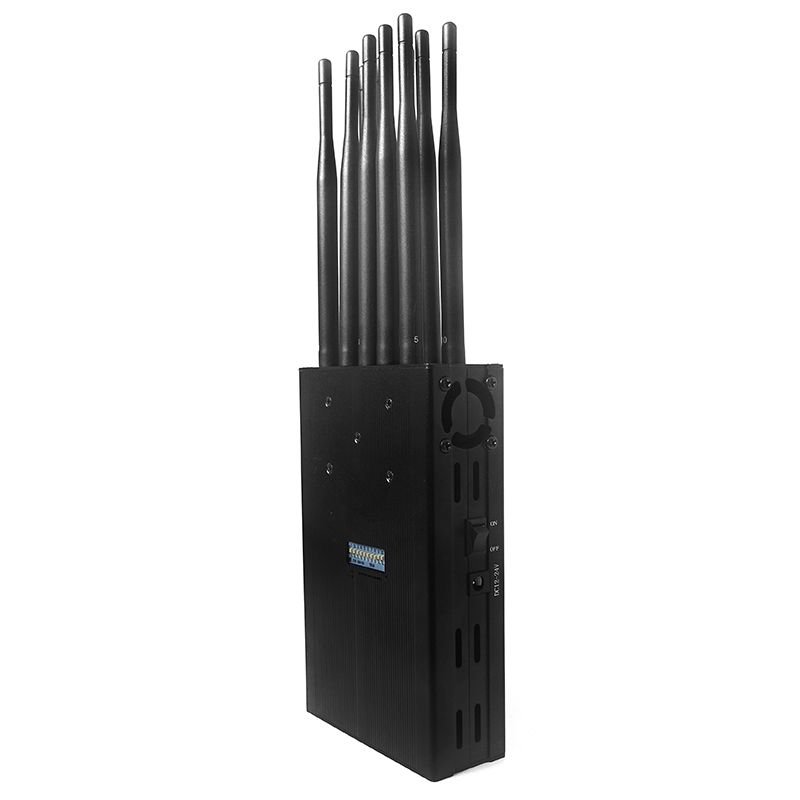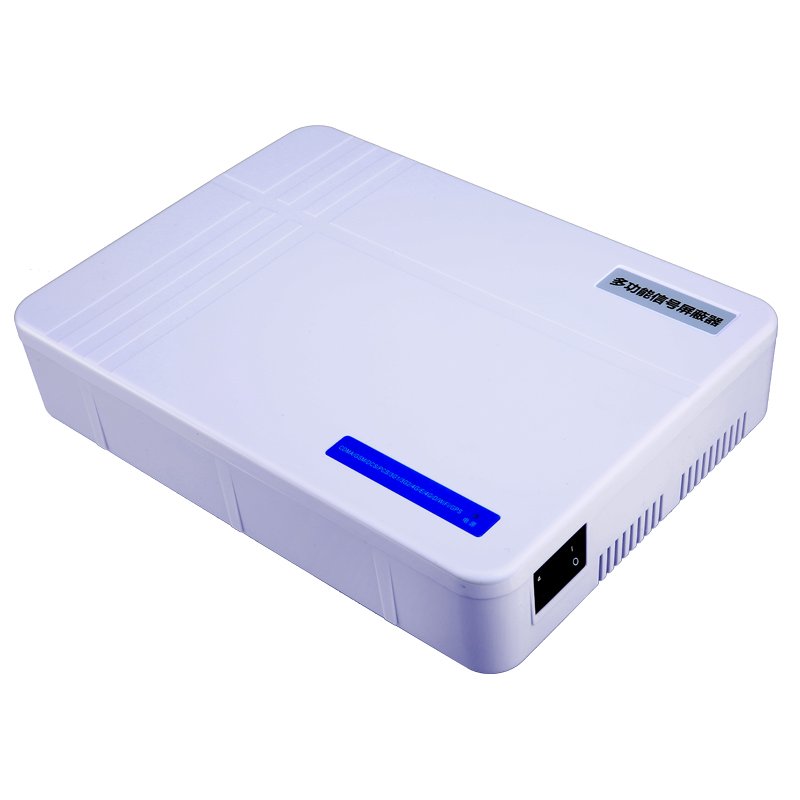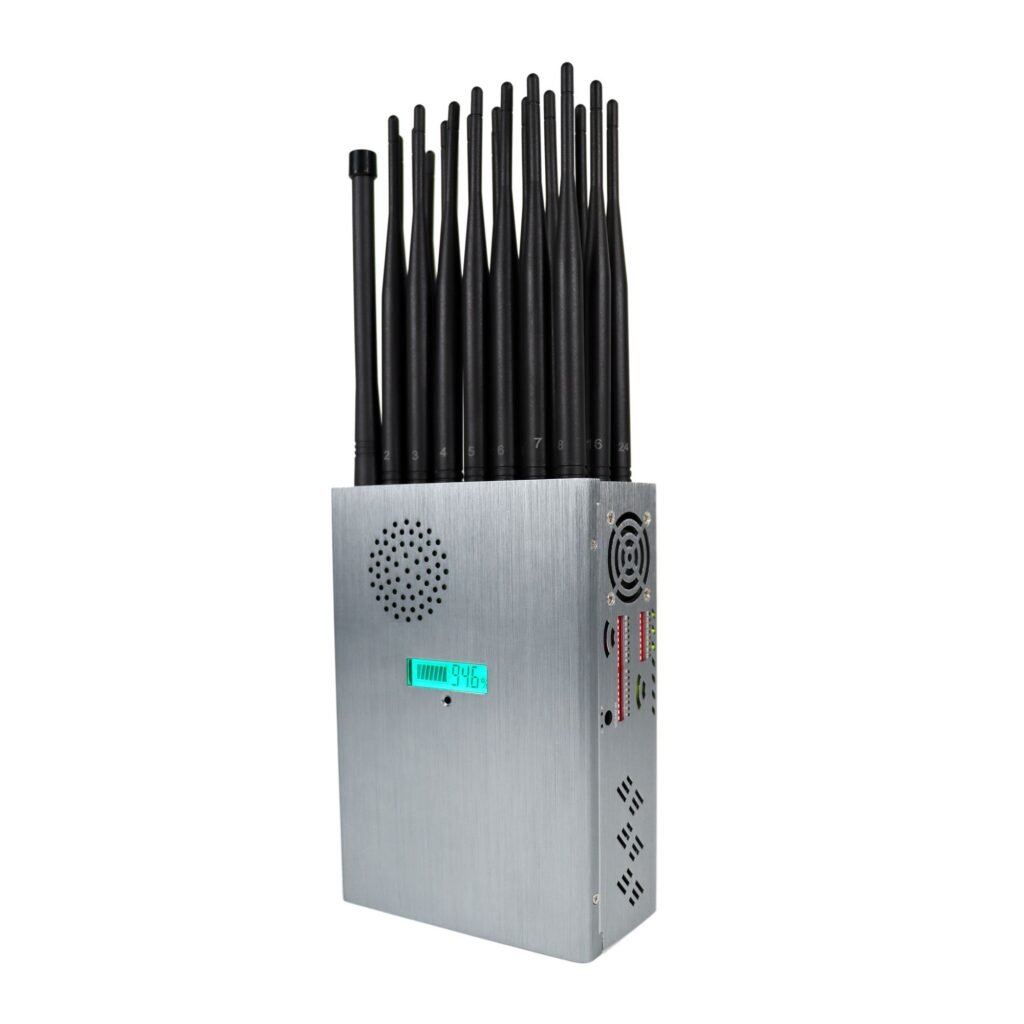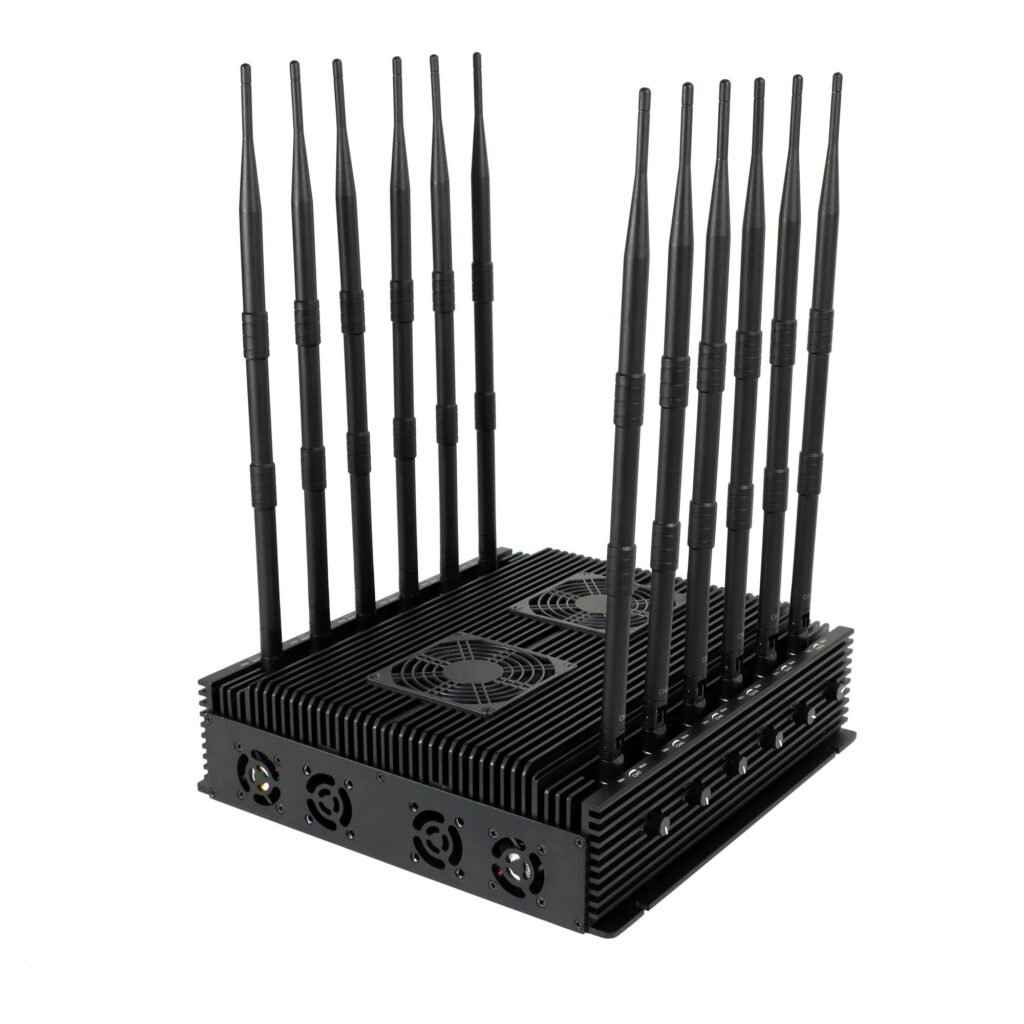In the previous article "Comparison of the interference range of high and low power jammers" we have analyzed the interference ranges of jammers with high output power and jammers with low output power. However, some of our customers confuse the signal jamming distance with the signal transmission distance. Now I will help you to analyze the difference between signal jamming distance and signal transmission distance.
Let's take the example of cell phone jammers. The interference range of a cell phone jammer is closely related to the signal transmission power of the device: The higher the transmitting power, the greater the signal jamming range. However, the range of signal interference is also influenced by many other factors in addition to the transmission power, such as the presence of obstacles, the material and thickness of the obstacles and the strength of existing mobile phone signals in the vicinity. The signal transmission distance of the interfering transmitter also depends on these factors. Next, we analyze the signal jamming distance and the signal transmission distance respectively.
The most important factors that influence the jamming distance of signal jammers
Transmission power
We know that the transmission power of a cell phone interference transmitter is the most important factor in determining its interference range. In general, the higher the power, the greater the coverage area of the signal interference. For example, the interference range of a low-power jammer may only be a few meters. Have you purchased the SDP03HD? Let's take SDP03HD as an example. For example SDP03HD As a low-power jammer, it can interfere with 2G and 3G signals for a few meters. However, GPS signals are usually weaker than 3G signals, so SDP03HD can interfere with GPS signals for more than ten meters. The jamming range of a high power jammer can be tens of meters or even more.
Obstacles in the signal transmission path
When your device is in operation, the signal may be partially absorbed or reflected by obstacles such as buildings, walls, metal materials, etc. during propagation, resulting in a shorter interference range. In addition, the material and thickness of the obstacle have a great influence on the degree of signal attenuation. For example, if you test it, you will find that reinforced concrete walls generally block signal transmission better than ordinary wooden walls. If you don't want to carry out the test yourself, but are interested in how much different materials reduce signal transmission, you can find out here "The influence of wall materials on the penetrability of signals emitted by cell phone jammers" read. Are you interested in how much different materials reduce signal transmission?
Regional signal strength
The interference effect of the jammer is also limited by the strength of the surrounding mobile radio signals. In areas with weak signal strength (e.g. remote mountain regions or basements), jammers may cause greater interference throughout the surrounding area. In areas with better signal coverage (e.g. city centers), the jammer may require more power to achieve the same effect. On closer inspection, you will find that this is due to the fact that there tend to be more base stations in cities than in remote areas.
Device frequency adjustment
The frequency parameters of the jammer's jamming signal are very important! Jammers for cell phones need to jam different communication frequency bands (such as 2G, 3G, 4G and 5G). Each of our jammers is actually suitable for different usage scenarios, which means that the jamming frequency parameters of each of our jammers are different. If the transmission frequency of the device does not fully cover the target frequency band, the effectiveness may be significantly reduced.
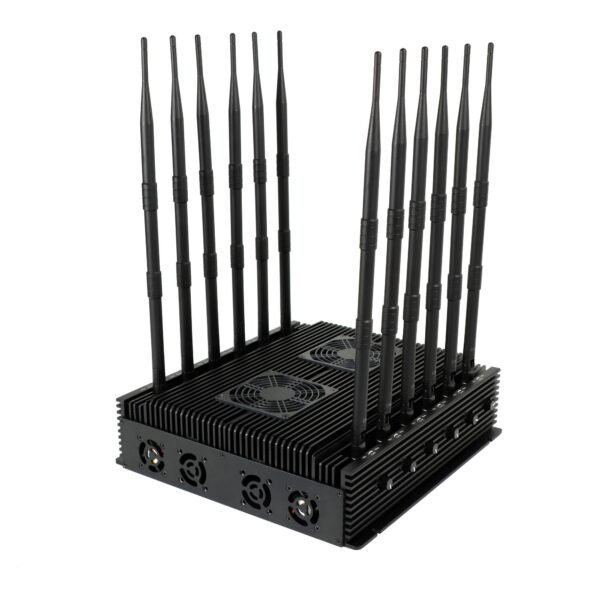
The difference between the signal interference range and the signal transmission distance of cell phone jammers
With the effective interference range of a Cell phone jammer usually refers to the radius within which the signal strength emitted by the jammer is greater than the signal strength emitted by the device to be jammed. We have also analyzed in previous articles that if the signal emitted by the jammer becomes weaker and weaker with increasing distance from the jammer and the signal strength emitted by the jammer is already weaker than the signal to be jammed, the jamming effect diminishes or even disappears.
The jamming range of most jammers on the market is between 1 and 100 meters. In special cases, the jamming distance can be over 100 meters, but as a rule there will be no significant breakthrough, which is the limit of the technical capabilities of most manufacturers. Let me explain this in detail. Even if the signal output power is the same, different signal types have different interference distances. If a jammer with high output power can interfere with a cell phone signal at a distance of 80 meters, then a GPS jammer with the same output power can interfere with GPS at a distance of up to 300 meters.
As mentioned above, successful jamming requires that the signal strength emitted by the jammer is greater than the signal strength to be jammed at the location in question. Let me analyze this in more detail. If the output power of the signal emitted by the signaling device we want to jam is 10W, it does not mean that our jammer also needs an output power of 10W, because the signal emitted by the device becomes weaker as the signal transmission distance increases. Do you understand what I mean by this? If the signal is transmitted into our environment, the signal we need to jam can be less than 1 W. That is, in this case, our jammer can successfully jam as long as its output power is greater than 1W.
It should be noted that the transmission distance of the signal can be significantly greater than the effective interference distance of the interfering transmitter. As the interference signal propagates outwards, the signal strength gradually weakens. Let's take the cell phone signal as an example. When the strength of the interfering signal is less than the signal strength of the base station, the cell phone resumes normal communication. Therefore, the effective jamming distance of the jammer may be 10 meters, but the transmission distance of its jamming signal may be several kilometers or even more.

